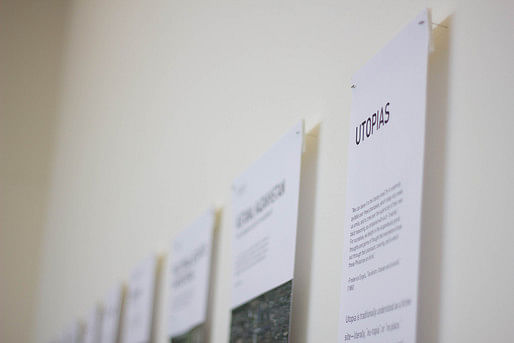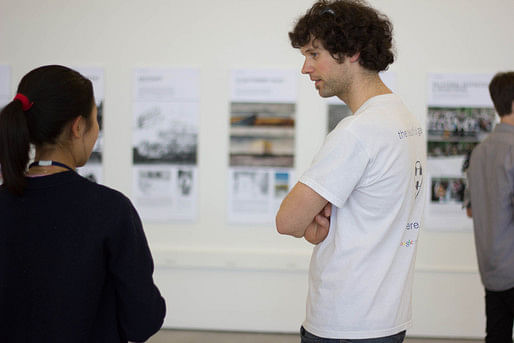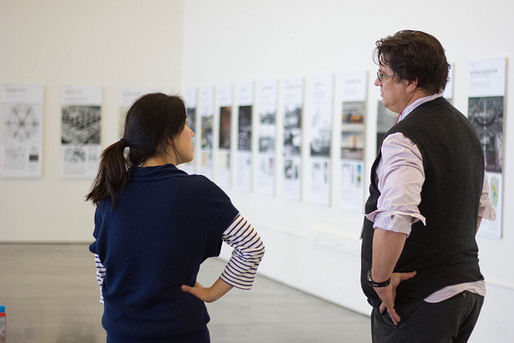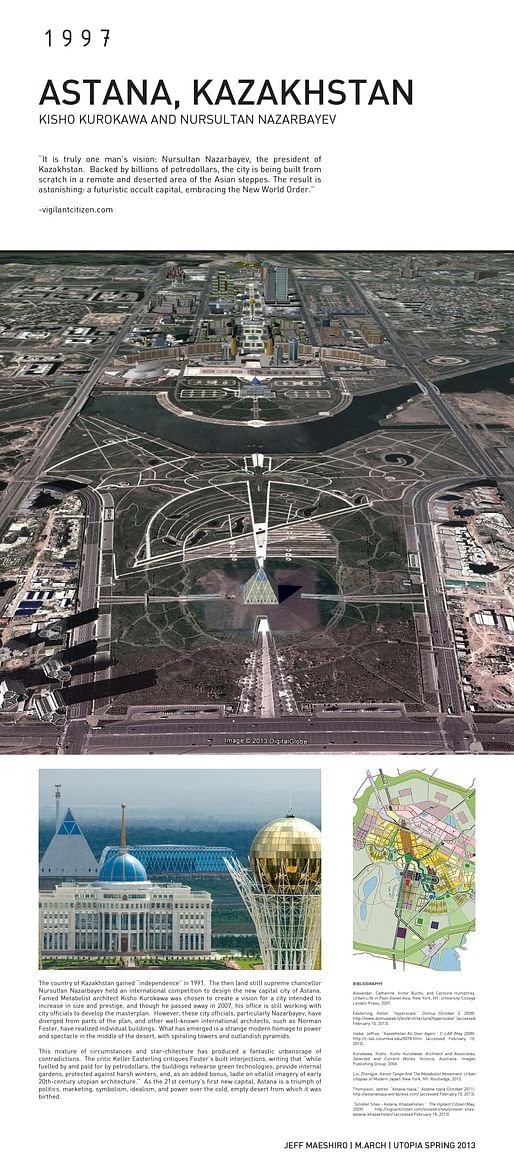
 Our graduate architecture seminar—led by our indefatigable professor Irene Cheng—recently put together an exhibition of our individual research projects, in-depth explorations of a particular historic or contemporary utopian venture, in an effort to bring a bit of architectural history and theory to the perpetually art-covered surfaces of our school's nave. Fellow classmate Anesta Iwan and I were in charge of the exhibition and board layouts.
Our graduate architecture seminar—led by our indefatigable professor Irene Cheng—recently put together an exhibition of our individual research projects, in-depth explorations of a particular historic or contemporary utopian venture, in an effort to bring a bit of architectural history and theory to the perpetually art-covered surfaces of our school's nave. Fellow classmate Anesta Iwan and I were in charge of the exhibition and board layouts.
I had fun snapping some photos of us enjoying our efforts after pinning them up. Also, here's the text from the exhibition introduction:
“We can leave it to the literary small fry to solemnly quibble over these phantasies, which today only make us smile, and to crow over the superiority of their own bald reasoning, as compared with such “insanity.” For ourselves, we delight in the stupendously grand thoughts and germs of thought that everywhere break out through their phantastic covering, and to which these Philistines are blind.”
-Frederick Engels, “Socialism: Utopian and Scientific” (1880)
Utopia is traditionally understood as a fictive site—literally, “eu-topia” or “no place.” Yet this has not prevented designers and reformers from trying to materialize radical visions of an ideal community on paper and in concrete, glass, and steel. Such attempts are easily dismissed as naïve, megalomaniacal, or simply farfetched. What makes a project utopian is not just its impracticability or distance from reality, however. The architectural historian Colin Rowe has argued that all utopias have two components—a sociopolitical program and an aesthetic vision. The fourteen projects in this exhibit, spanning from the end of the nineteenth century to the present, all combine a social, political, or economic agenda with an aesthetic form or impulse. Utopia may take the form of an urban plan striving to reconcile nature and the industrial city, or a temporary occupation of federal land by Native Americans, or an ambivalent fable about architecture in a modern consumer society. Recovering the history of these and other utopian projects may serve as incitement to continue such forms of critical-imaginative speculation in the present.







1 Comment
Glen Small's Biomorphic Biosphere I think is the most worked out of all architectural based Utopias. I comment on it here
http://www.smallatlarge.com/2013/04/biomorphic-biosphere-4-the-thrill-of-it-all/#more-979
Block this user
Are you sure you want to block this user and hide all related comments throughout the site?
Archinect
This is your first comment on Archinect. Your comment will be visible once approved.